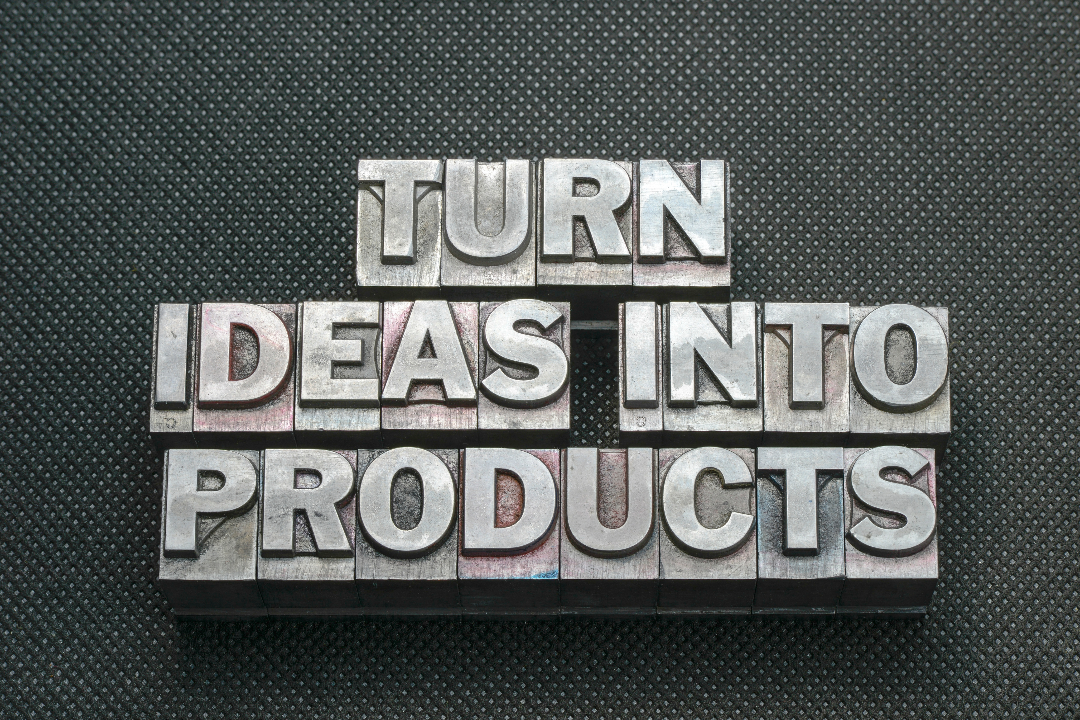Turning your invention into a product is an exciting and rewarding journey that involves several key steps. Whether you’re an aspiring entrepreneur or just looking to bring your innovative idea to life, here’s a comprehensive guide on how to turn your invention into a market-ready product:

1. Idea Validation:
- Market Research: Begin by researching your target market. Is there a demand for your invention? Who are your potential customers, and what problem does your invention solve for them? Understanding the market is crucial.
- Competitive Analysis: Analyze existing products or solutions in your niche. What makes your invention unique or superior? Identify your competitive advantage.
2. Protect Your Invention:
- Patent Search and Filing: Consult a patent attorney or agent to perform a thorough patent search. If your invention is unique and not already patented, consider filing for a patent to protect your intellectual property.
- Non-Disclosure Agreements (NDAs): When discussing your invention with potential partners or manufacturers, use NDAs to protect your idea from being shared or stolen.
3. Create a Prototype:
- Design and Engineering: Work on detailed designs and engineering plans for your invention. If you lack the skills, consider hiring professionals or firms specializing in product design and engineering.
- Prototyping: Build a working prototype of your invention. Prototyping helps you refine your design, identify potential issues, and demonstrate your concept to investors or partners.
4. Develop a Business Plan:
- Market Strategy: Outline your target market, pricing strategy, and distribution channels. Define your marketing and sales approach.
- Financial Projections: Create a financial forecast that includes startup costs, ongoing expenses, and revenue projections. This will be crucial for securing funding.
5. Secure Funding:
- Bootstrapping: If possible, use your own savings or income to fund your project initially.
- Seek Investors: Pitch your invention to angel investors, venture capitalists, or crowdfunding platforms like Kickstarter or Indiegogo.
- Apply for Grants and Competitions: Many organizations offer grants and competitions for innovative ideas. Research and apply for relevant opportunities.
6. Build a Team:
- Hiring: As your project progresses, you may need to hire experts in marketing, manufacturing, logistics, and sales.
- Networking: Establish connections within your industry and seek advice from experienced professionals.
7. Manufacturing:
- Select Manufacturers: Research and choose the right manufacturing partners. Consider factors like cost, quality, and scalability.
- Prototyping to Production: Transition from your prototype to full-scale production. Ensure quality control and consistency.
8. Branding and Packaging:
- Branding: Create a strong brand identity, including a name, logo, and marketing materials.
- Packaging: Design packaging that is both functional and visually appealing.
9. Legal Compliance:
- Regulations: Ensure your product complies with all relevant industry regulations and safety standards.
- Quality Control: Implement quality control processes to maintain product consistency and safety.
10. Marketing and Sales:
- Launch Strategy: Plan a strategic product launch. Leverage digital marketing, social media, and traditional advertising channels to reach your target audience.
- Sales Channels: Determine the best sales channels for your product, whether it’s through e-commerce, retailers, or direct sales.
11. Distribution and Logistics:
- Supply Chain: Establish a reliable supply chain to ensure efficient production and distribution.
- Fulfillment: Determine how orders will be fulfilled, whether through in-house operations or third-party logistics providers.
12. Customer Feedback and Iteration:
- Gather Feedback: Collect feedback from early customers to make improvements to your product.
- Continuous Innovation: Stay innovative and be prepared to iterate on your product to meet evolving market needs.
13. Create a Product Roadmap
- Scalability: Plan for growth and expansion. Consider international markets if applicable.
- Operational Efficiency: Continuously optimize your operations for efficiency and cost-effectiveness.
14. Protect Your Brand:
- Trademark: Consider trademarking your brand name and logo to protect your brand identity.
- Customer Support: Provide excellent customer support to build trust and maintain a positive reputation.
Bringing your invention to market is a complex but rewarding process. It requires careful planning, dedication, and a willingness to adapt to changing circumstances. Remember that success may not come overnight, but with determination and the right strategy, you can turn your invention into a successful product.
3D Innovations helps develops ideas into products. See how you can get your idea transformed today.
______
Developing Ideas From Concept To Product®
3D Innovations is a Product Development Company – from the 3D Design to a fully functional 3D Prototype & Product.
Connect with us on Twitter, Facebook, Instagram, & LinkedIn today.

